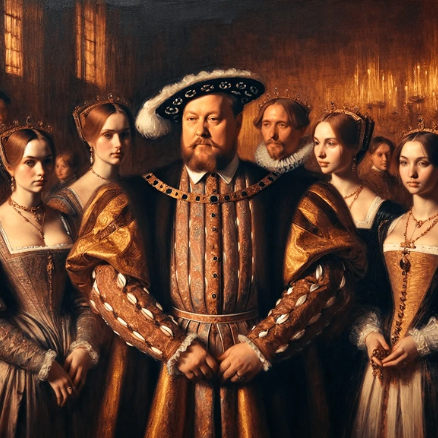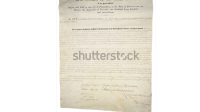Introduction: A Young Monarch Ascends the Throne
On April 21, 1509, at the age of 17, Henry VIII ascended the English throne following the death of his father, Henry VII. His accession marked the beginning of one of the most famous and transformative reigns in English history. Henry VIII’s rule would be defined by his charismatic personality, ambitious policies, and a series of dramatic events that would forever alter the course of the English monarchy and the nation’s relationship with the Catholic Church.
As the second monarch of the Tudor dynasty, Henry VIII inherited a kingdom that had been stabilized by his father after decades of civil war during the Wars of the Roses. However, Henry’s reign would see England transformed from a medieval kingdom into a Renaissance power, with sweeping changes in politics, religion, and society. The young king’s early years on the throne were marked by his enthusiasm for chivalric ideals, his passion for sports and the arts, and his desire to establish himself as a powerful ruler on the European stage.
Read Also : Death of King John (1216): The End of a Troubled Reign
The Early Life of Henry VIII: Preparing for Kingship
Henry VIII’s path to the throne was shaped by his upbringing and the expectations placed upon him as the heir to the Tudor dynasty.
A Childhood in the Shadow of the Throne
Born on June 28, 1491, at Greenwich Palace, Henry VIII was the second son of Henry VII and Elizabeth of York. As the younger son, Henry was not initially expected to become king. His older brother, Arthur, Prince of Wales, was the heir to the throne and was groomed from a young age to succeed their father. Henry, on the other hand, was given a more religious education, with the expectation that he might pursue a career in the Church.
Henry’s childhood was spent in the shadow of his older brother, and he enjoyed the privileges of royal life without the burden of kingship. He was an intelligent and lively child, with a keen interest in learning, music, and sports. His education was supervised by some of the best scholars of the time, and he became fluent in Latin and French, as well as being well-versed in theology and the humanities.
However, Henry’s life changed dramatically in 1502 when Arthur died suddenly at the age of 15. With Arthur’s death, Henry became the new heir to the throne, and his future was irrevocably altered. He was thrust into the role of Prince of Wales, and his education and training were refocused on preparing him for kingship.
The Death of Henry VII: A Smooth Transition to Power
Henry VIII’s accession to the throne in 1509 followed the death of his father, Henry VII, who had ruled England for 24 years. Henry VII’s reign had been marked by his efforts to secure the Tudor dynasty’s hold on the throne, which he had won in 1485 at the Battle of Bosworth, ending the Wars of the Roses. His rule was characterized by cautious governance, a focus on financial stability, and the establishment of strong central authority.
Henry VII’s death was a significant moment in English history, as it marked the end of a reign that had brought peace and stability to a kingdom previously torn apart by civil war. The transition of power to Henry VIII was smooth and largely uneventful, thanks in part to the careful planning and preparation by Henry VII. The new king was well-received by the nobility and the people, who were eager to see what the young and energetic Henry VIII would bring to the throne.
Henry VIII’s accession was also marked by a sense of renewal and optimism. The young king’s charisma and enthusiasm for chivalric ideals, combined with his desire to be a warrior king like his predecessors, resonated with the English court and the wider populace. His early reign was characterized by a focus on establishing his authority, both at home and abroad, and by his efforts to distinguish himself from his father’s more cautious and conservative rule.
The Early Reign of Henry VIII: A King with Grand Ambitions
Henry VIII’s early years as king were marked by a desire to assert his power and establish himself as a dominant figure in European politics.
The Renaissance Prince: A Patron of the Arts and Education
One of the defining features of Henry VIII’s early reign was his embrace of the Renaissance ideals that were sweeping across Europe. Unlike his father, who had been more focused on financial prudence and political stability, Henry VIII was a true Renaissance prince. He was a patron of the arts, a lover of music and literature, and a supporter of humanist learning.
Henry’s court became a center of cultural activity, attracting scholars, artists, and musicians from across Europe. He established a number of educational institutions, including Christ Church College at Oxford and Trinity College at Cambridge, which reflected his commitment to learning and the promotion of Renaissance ideals. The king himself was a skilled musician and composer, and he took great pride in his intellectual accomplishments.
Henry’s patronage of the arts and education helped to foster a vibrant cultural scene in England, which would flourish throughout his reign. His support for humanism and the revival of classical learning also had a significant impact on the intellectual life of the nation, laying the groundwork for the cultural achievements of the Elizabethan era.
Marriage to Catherine of Aragon: Securing an Alliance
One of the first major acts of Henry VIII’s reign was his marriage to Catherine of Aragon, the widow of his older brother, Arthur. The marriage had been arranged by Henry VII as a way to secure an alliance with Spain, one of the most powerful kingdoms in Europe at the time. After Arthur’s death, Henry VII had sought to keep the alliance intact by arranging a marriage between Henry VIII and Catherine.
The marriage took place on June 11, 1509, just weeks after Henry VIII’s accession to the throne. Catherine, the daughter of King Ferdinand II of Aragon and Queen Isabella I of Castile, was a highly educated and devout Catholic, and she quickly became a popular queen. The marriage was seen as a significant political alliance, strengthening England’s ties with Spain and positioning Henry VIII as a key player in European politics.
However, the marriage would eventually become a source of great conflict and controversy. The lack of a male heir and Henry’s growing dissatisfaction with Catherine would lead to the king’s quest for an annulment, setting in motion a series of events that would culminate in the English Reformation and the break with the Catholic Church.
Henry’s Foreign Policy: The Quest for Glory
Henry VIII’s early reign was also characterized by his ambitions in foreign policy. The young king was eager to prove himself on the battlefield and to establish England as a major power in Europe. Inspired by the chivalric ideals of his predecessors, Henry sought to emulate the military successes of kings like Henry V, who had won fame and glory in the Hundred Years’ War.
In 1512, Henry VIII launched a military campaign against France, seeking to reclaim English territories that had been lost during the reign of his father. The campaign was part of a broader alliance with Spain and the Holy Roman Empire, known as the Holy League, which aimed to curb the power of France. Henry’s forces won a significant victory at the Battle of the Spurs in 1513, capturing the French towns of Thérouanne and Tournai.
Although the campaign was a success, it was also costly and did not lead to any lasting territorial gains. Nevertheless, Henry’s victory bolstered his reputation as a warrior king and established him as a force to be reckoned with on the European stage. His foreign policy during these early years was driven by a desire for glory and recognition, as well as by the need to assert England’s position as a major power in Europe.
The Road to the Reformation: Henry VIII’s Religious Turmoil
Henry VIII’s reign would eventually be defined by his break with the Catholic Church and the establishment of the Church of England, a decision that had profound and lasting consequences for England and the wider world.
The King’s Great Matter: The Quest for an Heir
One of the central issues that dominated Henry VIII’s reign was his desire to secure a male heir to the throne. By the mid-1520s, Henry’s marriage to Catherine of Aragon had produced only one surviving child, a daughter named Mary. The lack of a male heir was a source of great anxiety for the king, who feared that the Tudor dynasty would not survive if he failed to produce a male successor.
Henry became convinced that his marriage to Catherine was cursed by God, due to the fact that she had been his brother’s widow. He sought an annulment of the marriage, which would allow him to marry again and hopefully produce a male heir. However, Catherine refused to cooperate with the annulment, and the Pope, under pressure from Catherine’s nephew, the Holy Roman Emperor Charles V, refused to grant it.
The “King’s Great Matter,” as the annulment crisis became known, consumed much of Henry’s time and energy during the late 1520s. His desire for an heir and his frustration with the Church’s refusal to grant the annulment would eventually lead him to take drastic action.
The Break with Rome: Establishing the Church of England
Frustrated by the Pope’s refusal to grant him an annulment, Henry VIII decided to break with the Catholic Church and establish himself as the Supreme Head of the Church of England. This decision marked a turning point in English history, as it led to the English Reformation and the establishment of a separate, Protestant church in England.
In 1533, Henry secretly married Anne Boleyn, one of Catherine’s ladies-in-waiting, who was already pregnant with his child. Shortly thereafter, Thomas Cranmer, the newly appointed Archbishop of Canterbury, declared Henry’s marriage to Catherine null and void, and Anne was crowned queen. In response, the Pope excommunicated Henry, leading to a complete break between England and the Catholic Church.
In 1534, the Act of Supremacy was passed by Parliament, officially recognizing Henry as the Supreme Head of the Church of England. This act gave Henry the authority to oversee the church and to appoint bishops and other church officials. It also allowed him to dissolve monasteries and seize their wealth, which helped to fund his government and military campaigns.
The break with Rome had profound consequences for England. It led to the dissolution of the monasteries, the redistribution of church lands, and the establishment of a new religious order. It also set the stage for the religious conflicts that would plague England for much of the 16th and 17th centuries.
The Religious Reformation: Changes in Doctrine and Practice
The establishment of the Church of England brought about significant changes in religious doctrine and practice. While Henry VIII remained a devout Catholic in many ways, his break with Rome allowed for the introduction of certain Protestant ideas and practices into the English church.
One of the most significant changes was the translation of the Bible into English, which allowed ordinary people to read and interpret the scriptures for themselves. This was a major departure from the Catholic tradition, where the Bible was only available in Latin and was interpreted by the clergy. The English Bible became a powerful tool for spreading Protestant ideas and for challenging the authority of the Catholic Church.
Other changes included the abolition of certain Catholic practices, such as the veneration of saints and the use of religious images. The liturgy was also reformed, with the introduction of the Book of Common Prayer, which standardized religious services and made them more accessible to the laity.
The religious reformation initiated by Henry VIII had a lasting impact on English society and culture. It laid the foundations for the development of Protestantism in England and for the religious conflicts that would shape the nation’s history for centuries to come.
The Later Years of Henry VIII’s Reign: Power and Legacy
Henry VIII’s later years were marked by continued efforts to consolidate his power and secure his legacy.
The Six Wives of Henry VIII: Marriage, Politics, and Tragedy
One of the most famous aspects of Henry VIII’s reign was his six marriages, which were driven by his quest for a male heir and his desire to secure political alliances. Each of Henry’s marriages had significant political and personal consequences, and they are often seen as a reflection of his complex character and his evolving political priorities.
Henry’s first marriage to Catherine of Aragon ended in annulment after more than 20 years. His second marriage to Anne Boleyn produced a daughter, Elizabeth, but ended in tragedy when Anne was executed on charges of adultery and treason. His third marriage to Jane Seymour finally produced a male heir, Edward, but Jane died shortly after childbirth.
Henry’s subsequent marriages—to Anne of Cleves, Catherine Howard, and Catherine Parr—were less successful and were marked by political intrigue and personal disappointment. Anne of Cleves was quickly divorced, Catherine Howard was executed for adultery, and Catherine Parr outlived Henry but faced her own challenges as queen.
The story of Henry’s six wives has become one of the most famous and enduring aspects of his reign, reflecting the king’s determination to secure his dynasty and the personal and political complexities of his rule.
Henry’s Health and the Succession Crisis
In his later years, Henry VIII’s health began to decline, and he became increasingly paranoid and tyrannical. He suffered from obesity, gout, and a series of leg ulcers that left him in constant pain. His physical decline also affected his mental state, and he became more unpredictable and ruthless in his dealings with his courtiers and advisers.
As Henry’s health deteriorated, concerns about the succession became more pressing. Although he had finally secured a male heir, Edward, the young prince was frail and sickly, raising fears about the stability of the Tudor dynasty. Henry’s daughters, Mary and Elizabeth, were also potential heirs, but their legitimacy was in question due to the annulments of Henry’s marriages to their mothers.
In an effort to secure the succession, Henry issued a series of wills and statutes that outlined the order of succession and provided for a regency council to govern on behalf of Edward if he was still a minor at the time of Henry’s death. However, the uncertainty surrounding the succession would continue to cast a shadow over the final years of Henry’s reign.
The Legacy of Henry VIII: A Complex and Controversial Monarch
Henry VIII’s reign is one of the most significant and controversial in English history. His actions, particularly his break with the Catholic Church and the establishment of the Church of England, had far-reaching consequences that continue to be felt today. His reign was marked by significant achievements, including the strengthening of the monarchy, the expansion of royal authority, and the promotion of Renaissance culture and learning.
However, Henry’s reign was also characterized by cruelty, tyranny, and personal excess. His treatment of his wives, his ruthless suppression of dissent, and his extravagant spending on wars and palaces left a legacy of controversy and debate. Historians continue to grapple with the complexities of Henry’s character and the impact of his rule on England and the wider world.
Despite the controversies, there is no denying that Henry VIII was one of the most influential monarchs in English history. His reign marked a turning point in the development of the English state and the evolution of the monarchy, and his actions laid the foundations for the modern British nation.
Conclusion: The Beginning of Henry VIII’s Transformative Reign
The accession of Henry VIII in 1509 marked the beginning of a new era in English history. As a young and ambitious king, Henry sought to establish his authority, secure his dynasty, and assert England’s position on the European stage. His reign would be defined by a series of dramatic and far-reaching events, including the break with Rome, the establishment of the Church of England, and the consolidation of royal power.
Henry VIII’s legacy is a complex and multifaceted one. He is remembered as a charismatic and powerful ruler, but also as a tyrant who left a trail of personal and political destruction in his wake. His reign had a profound impact on the course of English history, shaping the nation’s religious, political, and cultural landscape for centuries to come.
As one of the most famous and controversial figures in British history, Henry VIII continues to fascinate and intrigue, and his reign remains a subject of enduring interest and debate.
FAQ About Henry VIII Becoming King (1509)
How did Henry VIII become king?
Henry VIII became king in 1509 following the death of his father, Henry VII. As the second son, Henry was not initially expected to inherit the throne, but he became the heir after the death of his older brother, Arthur, in 1502.
What were Henry VIII’s early goals as king?
Henry VIII’s early goals as king included establishing his authority, securing the Tudor dynasty, and asserting England’s position as a major power in Europe. He sought to emulate the chivalric ideals of his predecessors and pursued a policy of military and diplomatic engagement with other European powers.
How did Henry VIII’s marriage to Catherine of Aragon affect his reign?
Henry VIII’s marriage to Catherine of Aragon was initially a successful political alliance with Spain. However, the lack of a male heir and Henry’s desire for an annulment of the marriage led to a major conflict with the Catholic Church and ultimately to the English Reformation.
What was the significance of Henry VIII’s break with the Catholic Church?
Henry VIII’s break with the Catholic Church was a defining moment in his reign. It led to the establishment of the Church of England, with Henry as its Supreme Head, and marked the beginning of the English Reformation. This break had profound religious, political, and social consequences for England.
What is the legacy of Henry VIII’s reign?
Henry VIII’s legacy is complex and controversial. He is remembered for his significant contributions to the development of the English state and the monarchy, as well as for his role in the English Reformation. However, his reign was also marked by tyranny, personal excess, and religious persecution. His impact on English history continues to be felt today.







1 comment